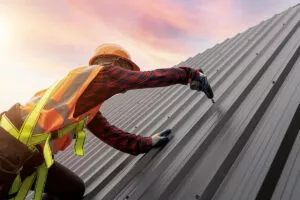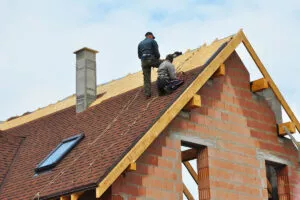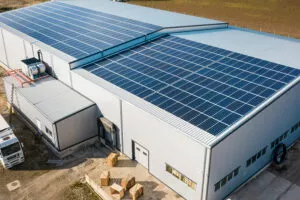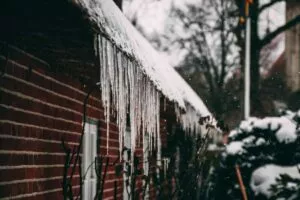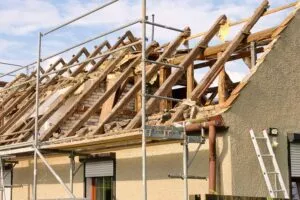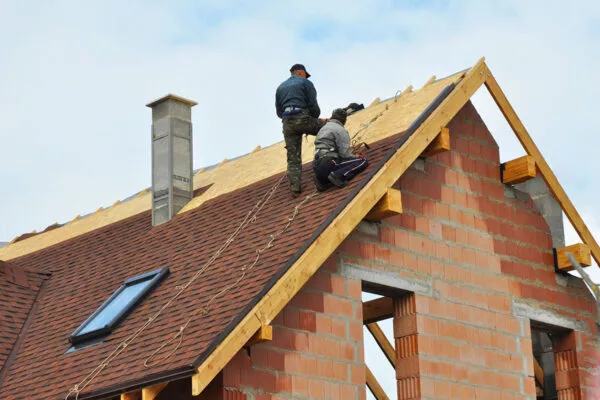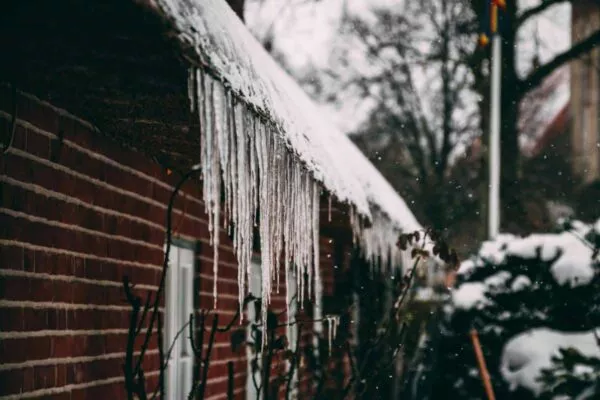Texas is known for its scorching summers, where extreme heat can reach unbearable levels. This intense climate has a significant impact on your roof, leading to various issues that affect the lifespan and performance of roofing materials. Key factors include:
- High Temperatures: Prolonged exposure to extreme heat causes thermal expansion in roofing materials.
- UV Radiation: Intense sunlight leads to deterioration, particularly in shingles and flat roofs.
- Aging Infrastructure: Older roofs are more susceptible to damage from heat-related stress.
Understanding how extreme heat can impact your roof is crucial for maintaining its longevity and performance in hot climates. Ignoring these effects may result in costly repairs or premature replacements. Taking proactive measures ensures your roof remains durable against the relentless Texas sun with the support of roofing and solar specialists in Austin.
The Science Behind Extreme Heat and Roofing Materials
1. Shingle Deterioration: A Common Issue in Hot Climates
Extreme heat significantly impacts roofing materials, particularly asphalt shingles, which are common in Texas homes. Understanding how this deterioration occurs can help homeowners take proactive measures to protect their roofs.
Thermal Movement
High temperatures cause materials to expand. Asphalt shingles undergo thermal movement, which can lead to warping and curling. This expansion may create gaps that allow water intrusion during storms.
Cracking
As temperatures rise, the material becomes rigid and more susceptible to cracking. These cracks can form due to repeated cycles of heating and cooling, especially during the hot summers followed by cooler nights. Over time, even small cracks can lead to significant leaks.
UV Radiation Decomposition
The sun’s UV rays break down the chemical bonds within the shingle materials. This degradation weakens the shingles, making them brittle over time. As a result, you may notice discoloration or fading on your roof’s surface—an indication of UV damage.
Shingle Curling
Exposure to extreme heat can cause shingles to curl at the edges or even in the middle. This curling not only affects appearance but also compromises the integrity of the roofing system. When shingles curl, they no longer lie flat against the roof deck, increasing vulnerability to wind uplift and water penetration.
Heat Absorption
Dark-colored asphalt shingles absorb more heat than lighter materials. This absorption raises rooftop temperatures further, exacerbating thermal expansion and increasing wear and tear on the roofing material.
In our extreme climate, these factors collectively contribute to accelerated shingle deterioration. Regular inspections become vital in identifying early signs of damage. Homeowners should remain vigilant for symptoms such as curling, cracking, or discoloration. Taking immediate action can prevent minor issues from escalating into costly repairs or replacements.
2. Flat Roofs: Vulnerable to Intense Sunlight
Flat roofs face unique challenges in the Texas climate due to extreme heat and intense UV radiation. The flat design lacks the natural drainage of sloped roofs, leading to water pooling and increased vulnerability to damage.
Key issues include:
- Blistering: Extreme heat causes roofing materials to expand, creating bubbles or blisters that weaken the surface.
- Membrane Failure: Continuous thermal movement can lead to cracks and splits in the membrane, compromising the roof’s integrity.
- UV Radiation Damage: Prolonged exposure degrades materials, accelerating deterioration and reducing lifespan.
In Texas summers, flat roofs are particularly susceptible to these conditions. The combination of thermal expansion and UV exposure can significantly shorten their lifespan compared to traditional pitched roofs.
3. Aging Roofs: More Susceptible to Heat Damage
Aging roofs are particularly vulnerable to damage from extreme heat. As roofing materials age, their ability to withstand harsh summers diminishes significantly. Factors contributing to this vulnerability include:
- UV Radiation: Prolonged exposure leads to deterioration of materials, causing cracking and curling.
- Thermal Movement: Constant expansion and contraction from high temperatures can weaken seals and joints, resulting in leaks.
- Shingle Deterioration: Older shingles may lose their protective granules, exposing them to further damage.
The average lifespan of roofs in hot climates varies widely:
- Asphalt shingles typically last 15-30 years.
- Metal roofing can endure for 40-70 years.
- Clay or concrete tiles offer a lifespan of over 50 years.
The Importance of Regular Roof Inspections and Maintenance in Hot Weather
Regular roof inspections are vital for identifying heat damage early. Extreme temperatures can accelerate wear and tear on roofing materials, making it crucial to catch issues before they escalate into costly repairs.
Benefits of Regular Inspections
- Early Detection: Spotting signs of roof damage such as curling shingles or blistering membranes can save you money in the long run.
- Prolonged Lifespan: Routine checks help maintain your roof’s integrity, extending its lifespan.
Practical Roof Maintenance Tips
- Keep Gutters Clean: Clogged gutters can lead to water pooling on the roof, increasing the risk of leaks and structural damage.
- Ensure Proper Ventilation: Adequate airflow prevents heat buildup in the attic, which can warp roofing materials and deplete energy efficiency.
- Inspect for Damage: Look for cracked shingles, rust spots on metal roofs, or loose tiles. Addressing these issues promptly helps prevent further deterioration.
Choosing the Right Roofing Materials for Texas Homes
1. Asphalt Shingles vs. Metal Roofing: A Durability vs. Cost Comparison
Selecting the best roofing materials for Texas homes involves understanding the strengths and weaknesses of various options. Two popular choices are asphalt shingles and metal roofing, each offering distinct benefits.
Asphalt Shingles:
- Affordability: Typically, asphalt shingles are less expensive upfront, making them accessible for many homeowners.
- Variety: Available in numerous styles and colors, allowing customization to match your home’s aesthetic.
- Installation: Easier and quicker to install compared to metal roofs.
- Heat Resistance: Reflective coatings can enhance heat resistance, reducing energy costs.
However, asphalt shingles have some drawbacks:
- Lifespan: Generally lasts 15-30 years, especially in extreme Texas heat.
- Durability: More susceptible to warping and cracking due to thermal expansion and UV radiation exposure.
Metal Roofing:
- Longevity: Offers a lifespan of 40-70 years with proper maintenance, making it a more durable choice.
- Energy Efficiency: Reflects sunlight effectively, lowering cooling costs during hot summers.
- Resilience: Resistant to cracking and warping, providing robust protection against extreme weather conditions.
On the downside:
- Initial Cost: Higher upfront investment compared to asphalt shingles.
- Noise Level: Can be noisier during rain or hail unless properly insulated.
Both options present viable roofing solutions for Texas homes. Choosing between them depends on your budget, energy efficiency goals, and desired longevity.
2. Energy-Efficient Roofing Options in Texas: Reflective Coatings and More
Choosing the best roofing materials for Texas homes means knowing about energy efficiency benefits. Some roofing types are great for hot climates, especially:
1. Metal Roofs
Metal roofs are known for being durable and they have the ability to reflect sunlight, which reduces heat absorption. This feature can lead to significant savings on energy costs during the extremely hot summers.
2. Clay and Concrete Tiles
Clay and concrete tiles are also excellent at resisting heat. When combined with reflective coatings, clay tiles can further decrease heat buildup, resulting in more comfortable indoor temperatures.
The energy-efficient roofing options available not only fight against the intense heat but also provide long-term savings on energy bills. By investing in materials that reflect rather than absorb heat, homeowners can enjoy lower cooling expenses while also increasing the lifespan of their roofs.
Protecting Your Roof from Extreme Heat Damage
Protecting your roof from heat damage is essential, especially in Texas. Here are proactive measures you can take:
- Regular Inspections: Schedule routine inspections to identify early signs of heat damage.
- Proper Maintenance Techniques: Keep gutters clean and ensure ventilation systems are functioning effectively.
- Selecting Suitable Materials: Choose roofing materials designed to withstand extreme heat, such as metal or tile options.
- Energy-Efficient Options: Consider reflective coatings or high solar reflectance tiles to minimize heat absorption.
Seeking professional help when needed cannot be overstated. A qualified roofing expert can provide tailored recommendations based on your specific needs.
Take action today! Contact Divided Sky for a free consultation and ensure your roof withstands the intense Texas heat.
FAQs
How does extreme Texas heat affect roofing materials?
Extreme Texas heat can lead to significant damage to roofing materials through processes such as thermal movement, UV radiation exposure, and shingle deterioration. These factors can cause roofs to expand, crack, and ultimately degrade over time.
What are the common issues with shingles in hot climates?
In hot climates like Texas, shingles often face deterioration due to extreme heat. This includes expansion and cracking from thermal movement, as well as decomposition caused by UV radiation, leading to a reduced lifespan of the roof.
Why are flat roofs particularly vulnerable to heat damage?
Flat roofs are especially susceptible to intense sunlight because they have less slope for water drainage. This can result in issues such as blistering and membrane failure due to prolonged exposure to UV radiation and thermal stress.
How do aging roofs compare to newer roofs in terms of heat damage susceptibility?
Aging roofs are more vulnerable to heat damage due to wear and tear over the years. They may exhibit common issues such as cracks or weakened materials that make them less effective at withstanding extreme temperatures compared to newer roofs.
What maintenance tips can help protect my roof from extreme heat?
Regular roof inspections are essential for identifying potential heat damage early. Homeowners should also keep gutters clean, ensure proper ventilation, and consider using reflective coatings on their roofs to mitigate heat absorption. For peace of mind, call on Austin roofers for expert guidance on preservation strategies.
What roofing materials are best suited for Texas homes in hot climates?
When choosing roofing materials for Texas homes, options like metal roofing and clay tiles with reflective coatings are recommended due to their durability and energy efficiency. Asphalt shingles can also be used, but it’s important to consider their longevity in extreme heat conditions. Professional roofing contractors in Austin TX can help you determine the best fit, especially if you’re considering a new roof installation in Austin that stands up to the Texas climate.



